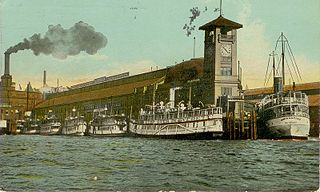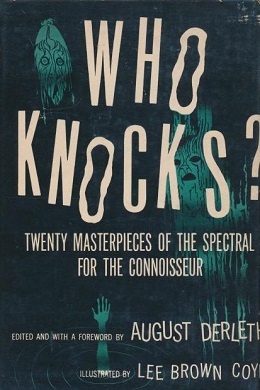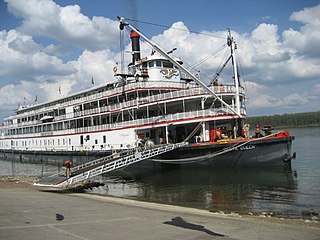
A steamboat is a boat that is propelled primarily by steam power, typically driving propellers or paddlewheels. Steamboats sometimes use the prefix designation SS, S.S. or S/S or PS ; however, these designations are most often used for steamships.

Richard Henry Blood Sr., better known by his ring name Ricky "The Dragon" Steamboat, is an American retired professional wrestler best known for his work with the American Wrestling Association (AWA), Jim Crockett Promotions (JCP), World Championship Wrestling (WCW), and the World Wrestling Federation. Steamboat is often regarded as one of the best professional wrestlers of all time.

The Steamboat Inspection Service was a United States agency created in 1871 to safeguard lives and property at sea. It merged with the Bureau of Navigation in 1932 to form the Bureau of Navigation and Steamboat Inspection, which in 1936 was reorganized into the Bureau of Marine Inspection and Navigation. The Bureau of Marine Inspection and Navigation's responsibilities were transferred temporarily to the United States Coast Guard in 1942. The Bureau was abolished in 1946, when its functions were transferred permanently to the Coast Guard.

The Puget Sound mosquito fleet was a multitude of private transportation companies running smaller passenger and freight boats on Puget Sound and nearby waterways and rivers. This large group of steamers and sternwheelers plied the waters of Puget Sound, stopping at every waterfront dock. The historical period defining the beginning and end of the mosquito fleet is ambiguous, but the peak of activity occurred between the First and Second World Wars.

Sabino is a small wooden, coal-fired steamboat built in 1908 and located at the Mystic Seaport Museum in Mystic, Connecticut. It is one of only two surviving members of the American mosquito fleet, and it was declared a National Historic Landmark in 1992. It is America's oldest regularly operating coal-powered steamboat.

Who Knocks? It was first published by Rinehart & Company in 1946. Many of the stories had originally appeared in the magazines Everybody’s Magazine, The Century, Weird Tales, Unknown, Temple Bar, Hutchinson’s Magazine, The English Review, Smith's Magazine and Harper's.

The Hunt Brothers were the owners of a steamboat business that ran on Puget Sound as part of the Puget Sound Mosquito Fleet. Five of the seven Hunt children became owners, engineers and masters of steamboats, these were Emmett E., Arthur M., Arda R., Lloyd.B., and Forest M. Hunt.

Steamboats played a major role in the 19th-century development of the Mississippi River and its tributaries, allowing practical large-scale transport of passengers and freight both up- and down-river. Using steam power, riverboats were developed during that time which could navigate in shallow waters as well as upriver against strong currents. After the development of railroads, passenger traffic gradually switched to this faster form of transportation, but steamboats continued to serve Mississippi River commerce into the early 20th century. A small number of steamboats are still used for tourist excursions in the 21st century.

Steamboat Willie is a 1928 American animated short film directed by Walt Disney and Ub Iwerks. It was produced in black and white by Walt Disney Studios and was released by Pat Powers, under the name of Celebrity Productions. The cartoon is considered the debut of both Mickey and Minnie Mouse, although both characters appeared several months earlier in a test screening of Plane Crazy. Steamboat Willie was the third of Mickey's films to be produced, but it was the first to be distributed, because Disney, having seen The Jazz Singer, had committed himself to produce one of the first fully synchronized sound cartoons.

The Lucy Walker steamboat disaster was an 1844 steamboat accident caused by the explosion of the boilers of the steamboat Lucy Walker near New Albany, Indiana, on the Ohio River. The explosion occurred on the afternoon of Wednesday, October 23, 1844, when the steamer's three boilers exploded, set the vessel on fire, and sank it. It was one of a number of similar accidents of early 19th-century riverine transportation that led to important federal legislation and safety regulations. The vessel's owner was a Native American; her crew were African-American slaves, and her passengers represented a cross-section of frontier travelers.

The river sternwheeler Ramona operated from 1892 to 1908 on the Willamette River in Oregon, on the Stikine River running from Wrangell, Alaska into British Columbia, and the Fraser River, in British Columbia. This vessel should not be confused with the coastal steamship Ramona which also ran in Alaskan waters.

The Moselle was a riverboat constructed at the Fulton shipyard, in Cincinnati, Ohio. between December 1, 1837 and March 31, 1838. The Moselle was considered one of the fastest river boats in operation at the time, having completed a record-setting two-day, sixteen-hour trip between Cincinnati and St. Louis. On April 25, 1838, the Moselle, piloted by Captain Isaac Perin, suffered a boiler explosion just east of Cincinnati, killing 160 of the estimated 280–300 passengers. The boat had just pulled away from a dock near the neighborhood of Fulton, when all four boilers simultaneously suffered a catastrophic failure resulting in the total destruction of the ship from the paddlewheels to the bow. The ship drifted approximately 100 yards before sinking to the bottom of the Ohio river. Negligence may have been a factor in the explosion: many eyewitness reports claimed that Captain Perin had been racing another riverboat, the Ben Franklin (1836) at the time of the explosion, and therefore the pressure in the boilers was excessively high.

Mohican II is a historic steel riveted hull excursion steamboat located at Lake George in Warren County, New York. She was built in 1907-08 for the Lake George Steamboat Company by the T.S. Marvel Shipuilding Company of Newburgh, New York. She measures 117 ft (36 m) in length, 26 ft (7.9 m) in beam, and 8.3 ft (2.5 m) depth of hold. She was designed for use on Lake George as an excursion vessel, has been in continuous use for over 100 years and is the oldest passenger vessel in the United States.
The Vashon Navigation Company was a shipping company that operated steamboats on Puget Sound in the early 1900s. Steamboats owned by the company included Norwood and the propeller steamer Vashon. The company was founded by steamboat captain Chauncey "Chance" Wiman and John Manson, of Dockton, who was a steamboat captain and an engineer.
The steamboat Comet was the second steamboat to navigate the Ohio and Mississippi rivers. Comet's owner was Daniel D. Smith and she was launched in 1813 at Pittsburgh, Pennsylvania. With an engine and power train designed and built by Daniel French, the Comet was the first of the Western steamboats to be powered by a horizontal high-pressure engine with its piston rod connected to a stern paddle wheel. Smith was the first to defy the steamboat monopoly in Orleans Territory granted to Robert R. Livingston and Robert Fulton.

The Louisiana was a Mississippi River steamboat that exploded on November 15, 1849, killing at least 150 and possibly as many as 200 people, and grievously wounding scores of others. All of the boilers exploded simultaneously about five minutes after she pulled away from the dock at Gravier Street in New Orleans; the entire boat sank 10 minutes after the explosion. Several of the dead were on the steamer Storm, which was docked adjacent to the Louisiana.














